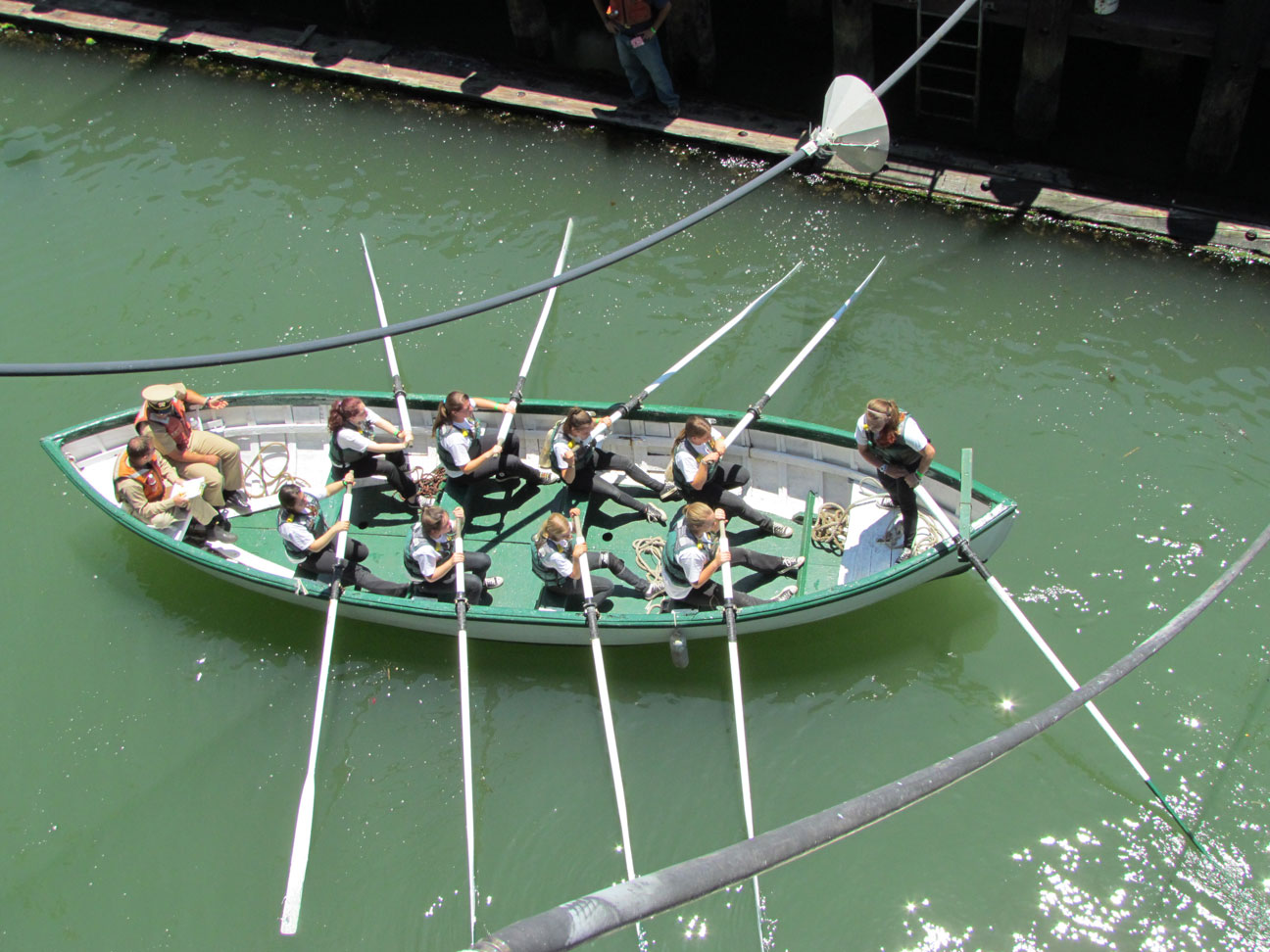|
In 1950 I was 14 and a member of a Sea Scout Ship in Arcadia, California. (Or was it Monrovia?) We met regularly, wore sailors uniforms and learned navy skills, traditions and etiquette. Our adult leader's name was "Conrad."
We spent many weekends at a barracks in Long Beach (a 40 mile drive) and had access to the water for rowing lifeboats with nine-man crews (a coxswain and eight oarsmen.)
Three activities during competition regattas with other ships were:
Hoisting the scuttlebutt is a timed event Sea Scouts participate in during regattas. A 50-gallon drum of water (about 400 pounds) is lifted 3 feet off the ground using a block and tackle and tripod.
Timing stops when all crew members are back in line and called to attention by the coxswain. Disqualification occurs when water is spilled or if crew other than the coxswain talk. Runs of under one minute are not unusual. Good knot tying is critical.
Another pretty good web page by Grant MacLaren
|






